maintenance JEEP WRANGLER 2004 Owners Manual
[x] Cancel search | Manufacturer: JEEP, Model Year: 2004, Model line: WRANGLER, Model: JEEP WRANGLER 2004Pages: 1056, PDF Size: 12.55 MB
Page 18 of 1056
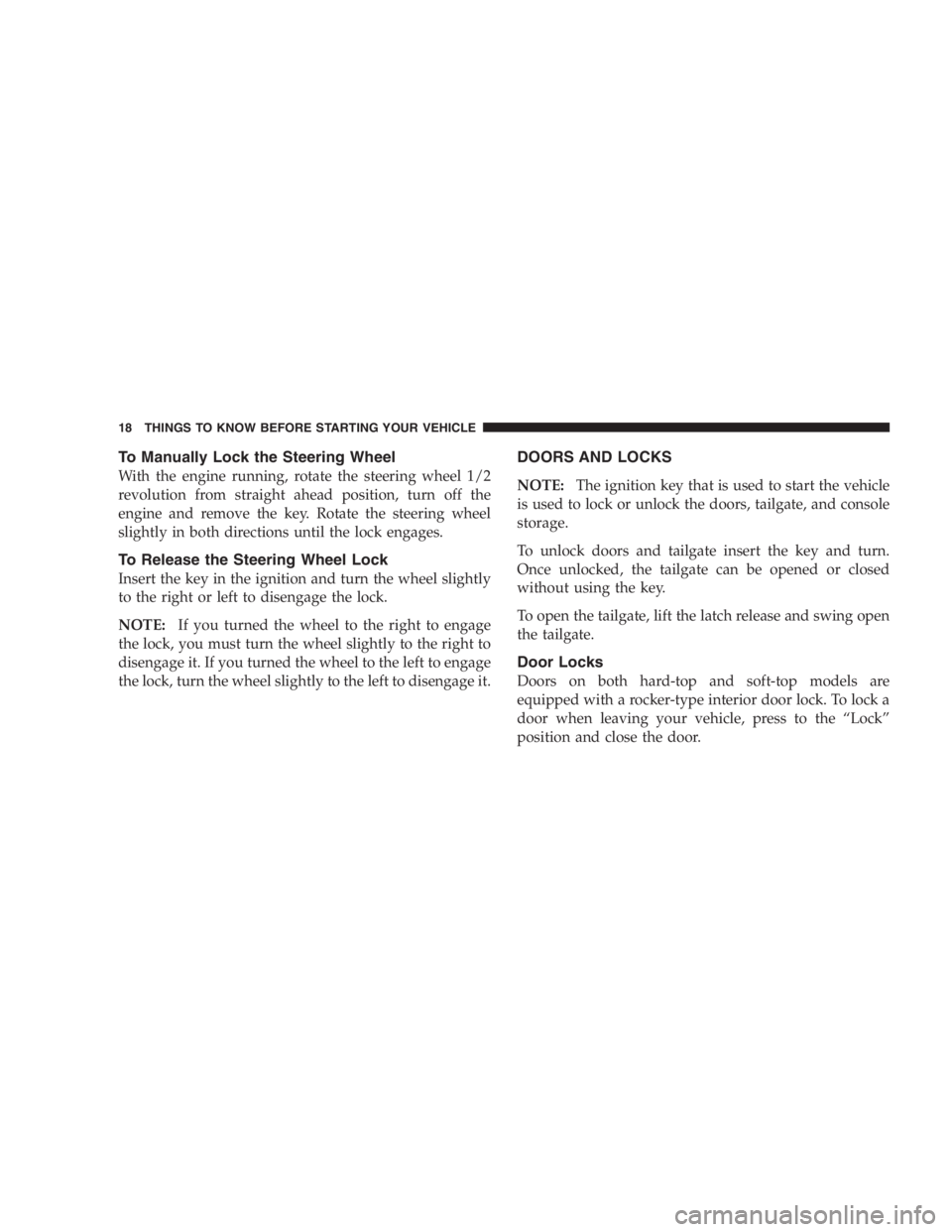
2THINGS TO KNOW BEFORE STARTING YOUR VEHICLE.............................11
3UNDERSTANDING THE FEATURES OF YOUR VEHICLE..............................47
4UNDERSTANDING YOUR INSTRUMENT PANEL...................................139
5STARTING AND OPERATING.................................................175
6WHAT TO DO IN EMERGENCIES..............................................235
7MAINTAINING YOUR VEHICLE...............................................245
8MAINTENANCE SCHEDULES..................................................299
9IF YOU NEED CONSUMER ASSISTANCE.........................................321
10INDEX....................................................................331
1
2
3
4
5
6
7
8
9
10
Page 146 of 1056
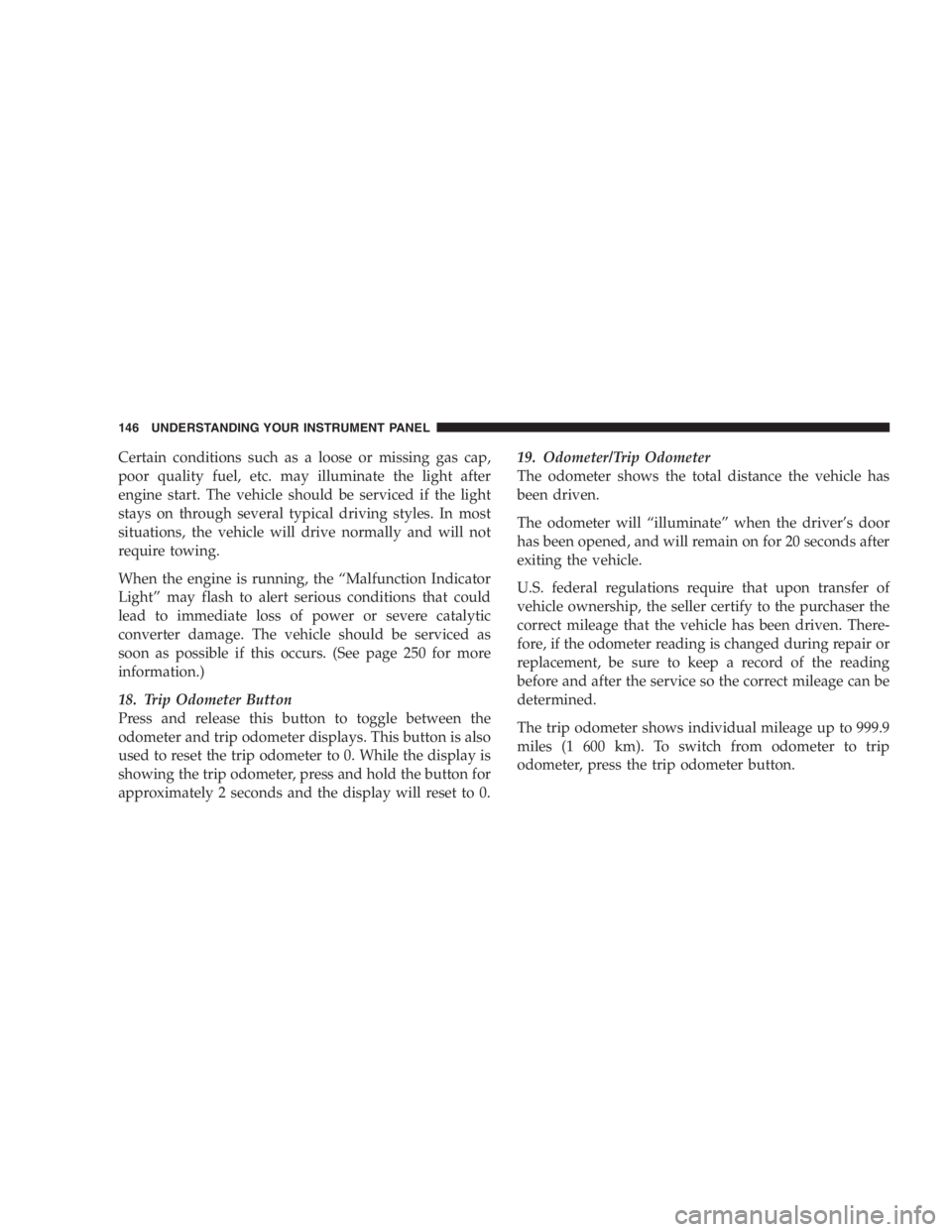
To avoid fuel spillage and overfilling, do not “top
off” the fuel tank after filling.
NOTE:When the fuel nozzle “clicks” or shuts off, the
fuel tank is full.
TRAILER TOWING
In this section you will find information on limits to the
type of towing you can reasonably do with your vehicle.
Before towing a trailer, carefully review this information
to tow your load as efficiently and safely as possible.
To maintain warranty coverage, follow the requirements
and recommendations in this manual concerning ve-
hicles used for trailer towing.Perform maintenance services as prescribed in the
“Maintenance Schedules” section. When your vehicle is
used for trailer towing, never exceed the gross axle
weight rating (GAWR) by the addition of:
•The tongue weight of the trailer.
•The weight of any other type of cargo or equipment
put in or on your vehicle.
Remember that everything put in or on the trailer adds to
the load on your vehicle.
The “D” Overdrive range can be selected when towing.
However, if frequent shifting occurs move the shift lever
to the next lower position to eliminate excessive auto-
matic transmission shifting. This action will also reduce
the possibility of transmission overheating and provide
better engine braking. Refer to “Transmission Shifting” in
this section for additional information.
STARTING AND OPERATING 229
Page 178 of 1056
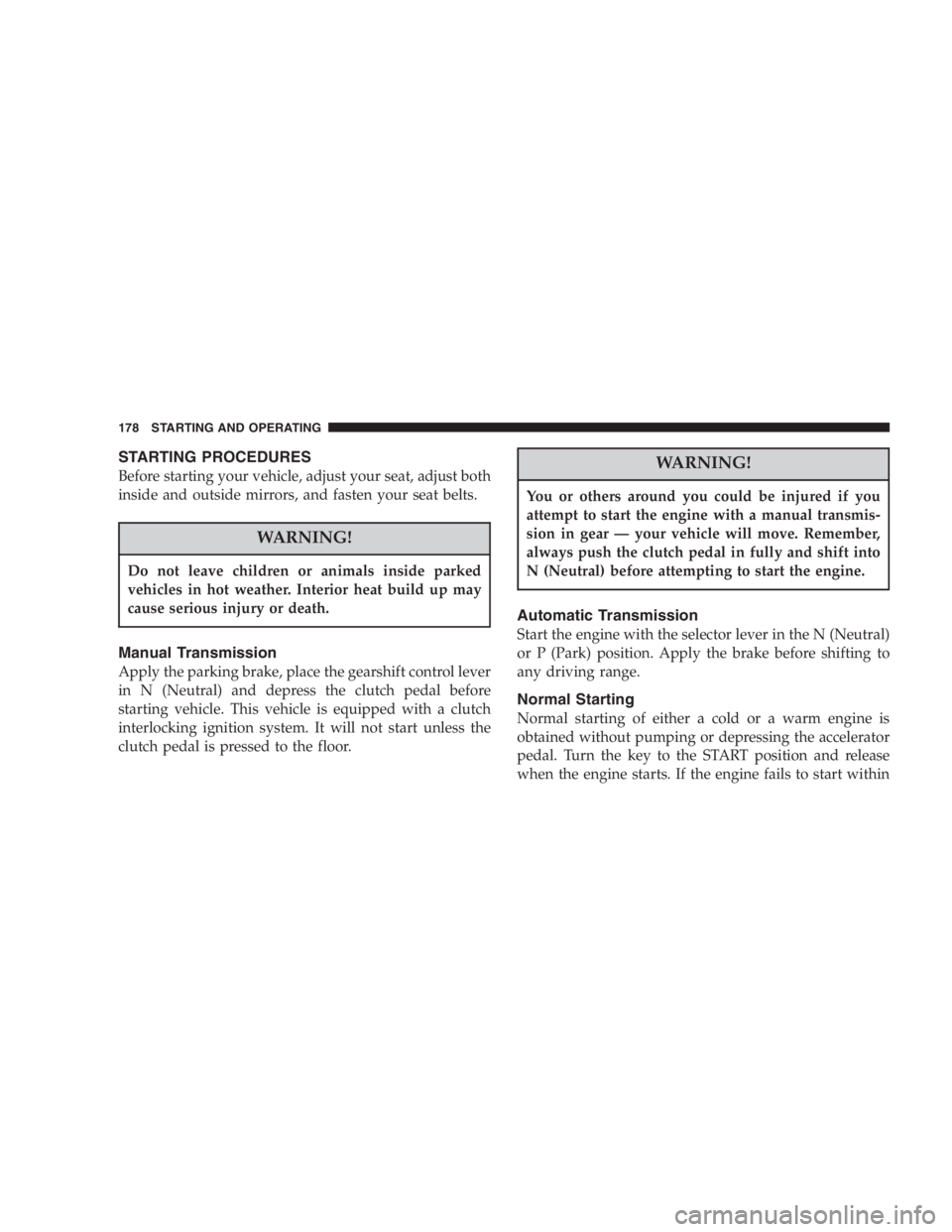
The air cleaner can provide protection in the case of
engine backfire. Do not remove the air cleaner
unless it is necessary for repair or maintenance.
Make sure that no one is near the engine compart-
ment before starting the vehicle with the air cleaner
removed. Failure to do so can result in serious
personal injury.Battery posts, terminals, and related accessories con-
tain lead and lead compounds. Always wash hands
after handling the battery.
Page 185 of 1056

Adding Engine Coolant
Your vehicle has been built with an improved antifreeze/
coolant that allows extended maintenance intervals. This
antifreeze/coolant can be used up to 5 Years or 100,000
miles before replacement. To prevent reducing this ex-
tended maintenance period, it is important that you use
the same antifreeze/coolant throughout the life of your
vehicle. Please review these recommendations for using
Hybrid Organic Additive Technology (HOAT)
antifreeze/coolant.
When adding antifreeze/coolant, a minimum solution of
50% recommended Mopar Antifreeze/ Coolant 5 Year/
100,000 Mile Formula HOAT (Hybrid Organic Additive
Technology), or equivalent, in water should be used. Use
higher concentrations (not to exceed 70%) if temperatures
below -34°F (-37°C) are anticipated.
268 MAINTAINING YOUR VEHICLE
Page 189 of 1056
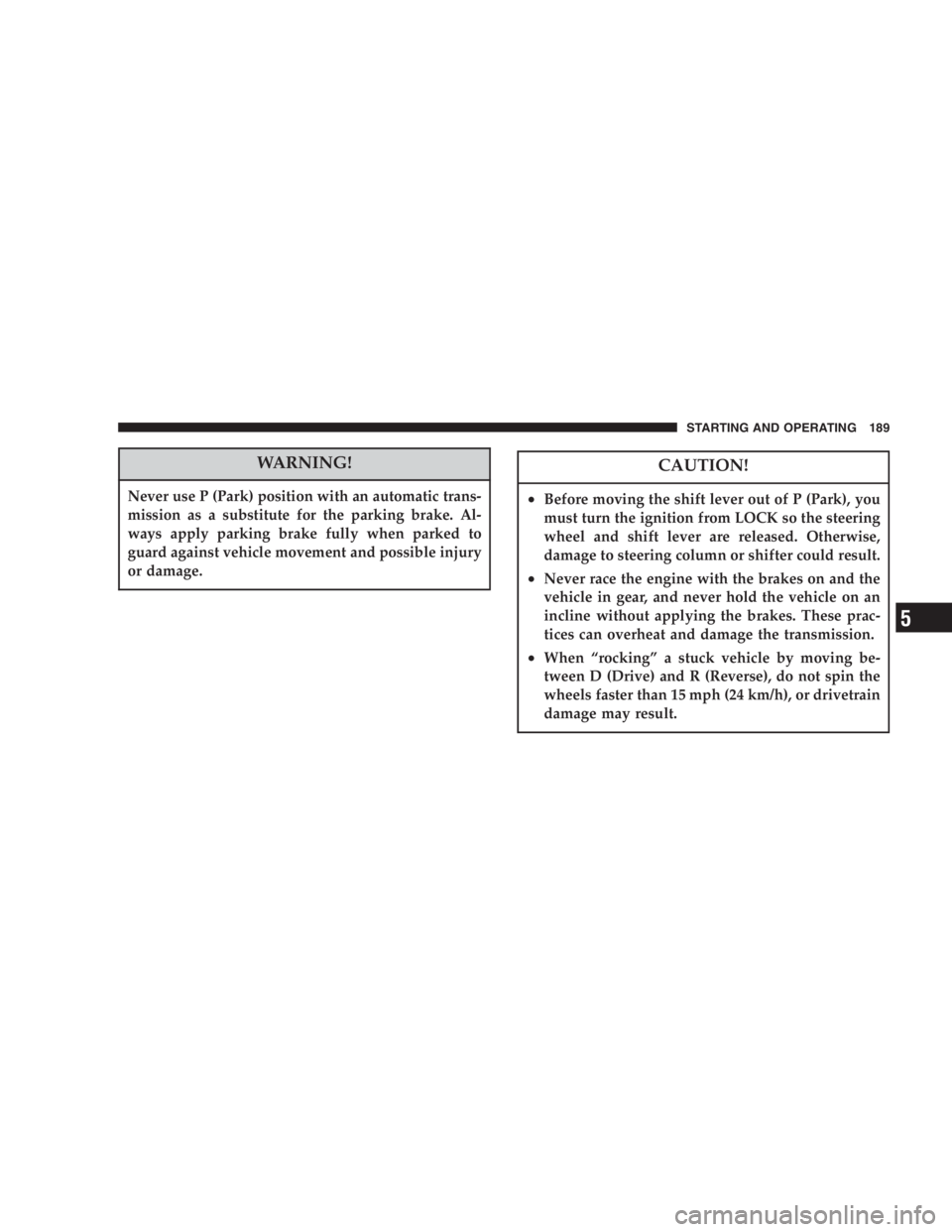
Riding the brakes can lead to brake failure and
possibly an accident. Driving with your foot resting
or riding on the brake pedal can result in abnormally
high brake temperatures, excessive lining wear, and
possible brake damage. You wouldn’t have your full
braking capacity in an emergency.
Brake and Power Steering System Hoses
When servicing the vehicle for scheduled maintenance,
inspect surface of hoses for evidence of heat and me-
chanical damage. Hard and brittle rubber, cracking, tears,
cuts, abrasion, and excessive swelling suggest deteriora-
tion of the rubber. Particular attention should be made to
examining those hose surfaces nearest to high heat
sources, such as the exhaust manifold.
Inspect all hose clamps and couplings to make sure they
are secure and no leaks are present.
NOTE:Inspection of brake hoses should be done when-
ever the brake system is serviced and every engine oil
change.
272 MAINTAINING YOUR VEHICLE
Page 280 of 1056
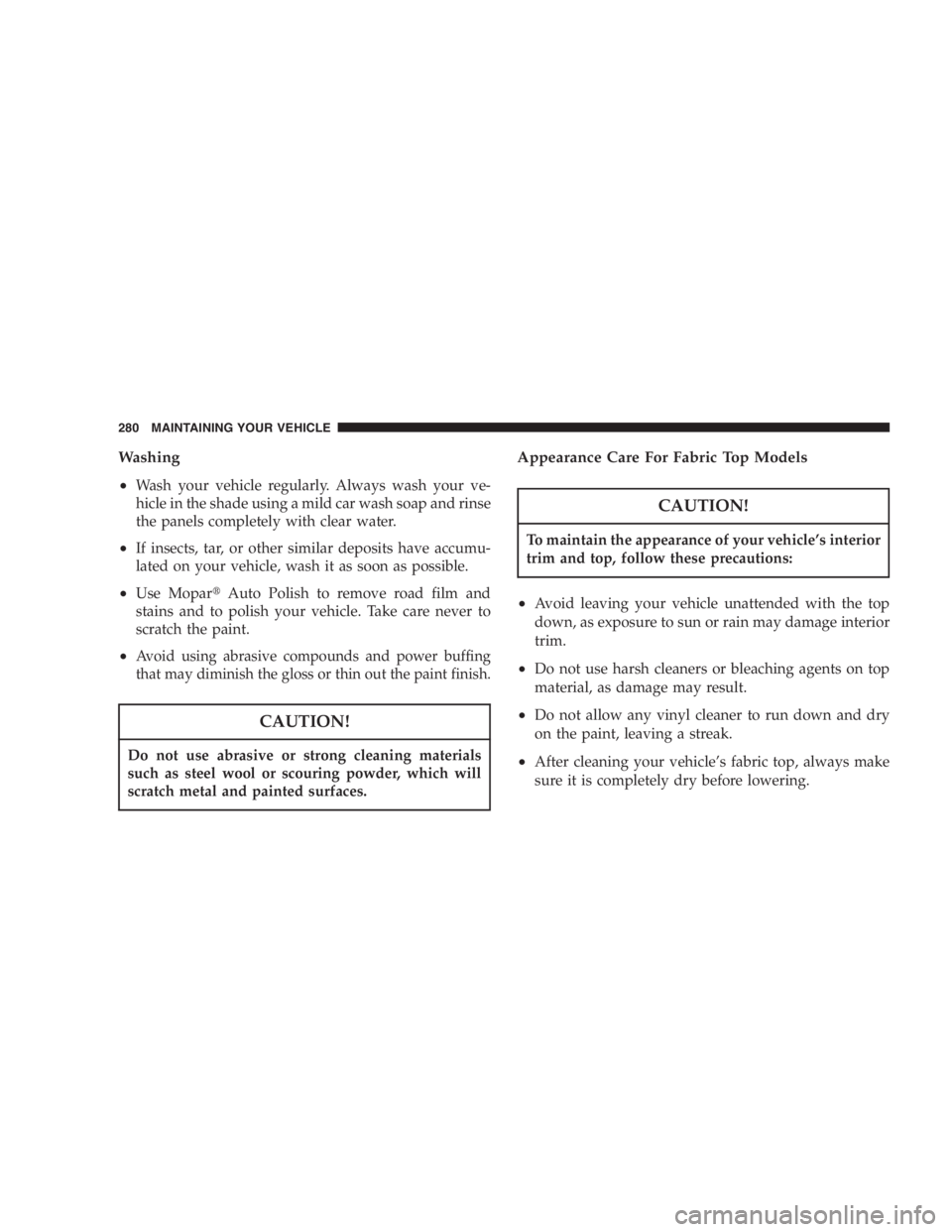
Airbag Warning Light
You will want to have the airbags ready to inflate for your
protection in an collision. While the airbag system is
designed to be maintenance free, if any of the following
occurs, have an authorized dealer service the system
immediately.
•The “Airbag Warning Light” does not come on or
flickers during the 6 to 8 seconds when the ignition
switch is first turned on.
•The “Airbag Warning Light” remains on or flickers
after the 6 to 8 second interval.
•The “Airbag Warning Light” flickers or comes on and
remains on while driving.
THINGS TO KNOW BEFORE STARTING YOUR VEHICLE 33
Page 296 of 1056
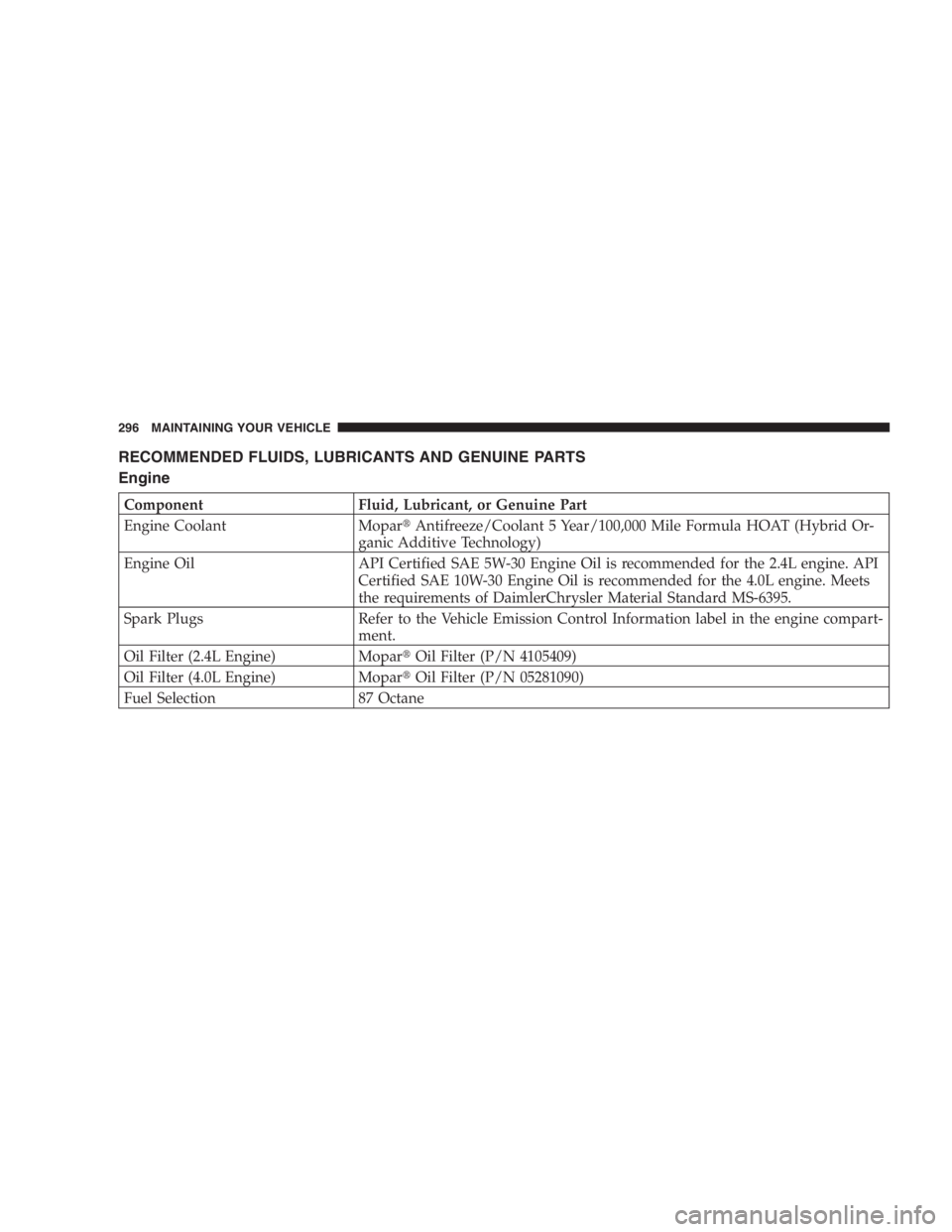
To avoid fuel spillage and overfilling, do not “top
off” the fuel tank after filling.
NOTE:When the fuel nozzle “clicks” or shuts off, the
fuel tank is full.
TRAILER TOWING
In this section you will find information on limits to the
type of towing you can reasonably do with your vehicle.
Before towing a trailer, carefully review this information
to tow your load as efficiently and safely as possible.
To maintain warranty coverage, follow the requirements
and recommendations in this manual concerning ve-
hicles used for trailer towing.Perform maintenance services as prescribed in the
“Maintenance Schedules” section. When your vehicle is
used for trailer towing, never exceed the gross axle
weight rating (GAWR) by the addition of:
•The tongue weight of the trailer.
•The weight of any other type of cargo or equipment
put in or on your vehicle.
Remember that everything put in or on the trailer adds to
the load on your vehicle.
The “D” Overdrive range can be selected when towing.
However, if frequent shifting occurs move the shift lever
to the next lower position to eliminate excessive auto-
matic transmission shifting. This action will also reduce
the possibility of transmission overheating and provide
better engine braking. Refer to “Transmission Shifting” in
this section for additional information.
STARTING AND OPERATING 229
Page 358 of 1056

Failure to perform the required maintenance items
may result in damage to the vehicle.
Page 425 of 1056

2THINGS TO KNOW BEFORE STARTING YOUR VEHICLE.............................11
3UNDERSTANDING THE FEATURES OF YOUR VEHICLE..............................47
4UNDERSTANDING YOUR INSTRUMENT PANEL...................................139
5STARTING AND OPERATING.................................................175
6WHAT TO DO IN EMERGENCIES..............................................235
7MAINTAINING YOUR VEHICLE...............................................245
8MAINTENANCE SCHEDULES..................................................299
9IF YOU NEED CONSUMER ASSISTANCE.........................................321
10INDEX....................................................................331
1
2
3
4
5
6
7
8
9
10
Page 457 of 1056

Airbag Warning Light
You will want to have the airbags ready to inflate for your
protection in an collision. While the airbag system is
designed to be maintenance free, if any of the following
occurs, have an authorized dealer service the system
immediately.
•The “Airbag Warning Light” does not come on or
flickers during the 6 to 8 seconds when the ignition
switch is first turned on.
•The “Airbag Warning Light” remains on or flickers
after the 6 to 8 second interval.
•The “Airbag Warning Light” flickers or comes on and
remains on while driving.
THINGS TO KNOW BEFORE STARTING YOUR VEHICLE 33